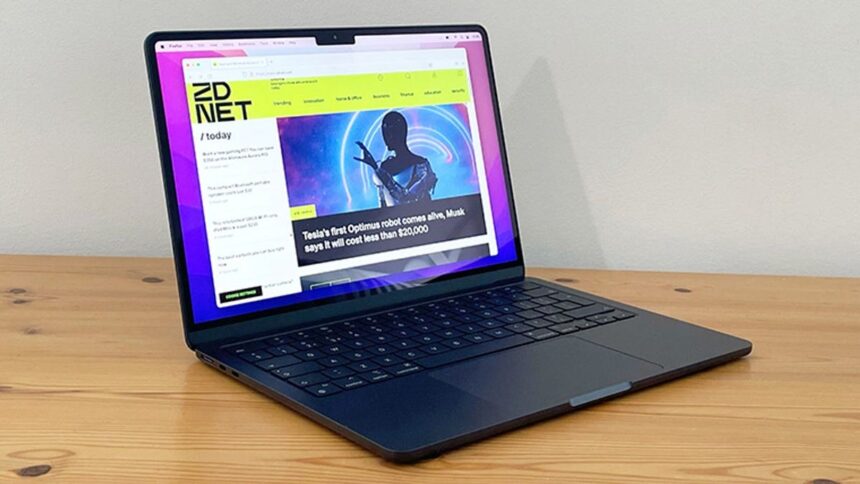The right laptop can make a world of difference. This applies to everyone, whether you’re an everyday user or a professional video editor. Powerful laptops can help video editors a lot, because their hardware allows them to handle tough workloads. Not only can they improve the quality of your video, but also save you a ton of time.
Also: Best laptops of 2024
What is the best laptop for video editing right now?
We performed extensive research and hands-on testing when looking for the top video editing laptops you can buy today. We looked for models that excelled in processing power, display, and price among other metrics. Our pick for the best laptop for video editing overall is the 16-inch Apple MacBook Pro (2023), due to its M3 Pro chipset, gorgeous Liquid Retina XDR display, and long-lasting battery life. It is rather expensive. But the MacBook Pro isn’t the only option out there. Below, we compare the top models from the best brands like ASUS and Dell.
Best laptops for video editing in 2024
Show less
Apple MacBook Pro 16 (2023)
Best laptop for video editing overall
Apple MacBook Pro 16 specs: Processor: Apple M3 Pro | Display size: 16 inches | Operating system: Mac OS | Dimensions: 14 x 9.77 x 0.66 inches
Our pick for the best video editing laptop should come as no surprise: It’s the 2023 release of the MacBook Pro 16. It really can’t be understated just how good Apple’s hardware is when comes to creative endeavors. The company puts so much effort toward ensuring its products meet the needs of its users.
For starters, the laptop comes equipped with an M3 SoC (system on a chip) The technology behind it is rather complicated, but all you need to know is it is 60% faster than the old M1 hardware. This is thanks in part to the new neural engine allowing the MacBook Pro to enable on-device machine learning. It also has a better media engine for HEVC and H.264 hardware acceleration plus support for ProRes RAW files. The MacBook Pro even has an AV1 decode engine so it can handle content from YouTube and Netflix.
Also: M3 MacBook Pro buying advice: Who it’s really for (and who should stick with M2 MacBook Air)
Of course, we can’t forget about the stunning Liquid Retina XDR display outputting a resolution of 3,024 x 1,964 pixels (or 3K for short). Screens sporting this tech have a high contrast ratio and brightness level for top-tier image fidelity. Other notable features include a 1080p webcam and a 22-hour battery life. We recommend opting for the model with the M3 Pro chip as offers great performance while not being eye-watering expensive. If you can afford it, then the MacBook with M3 Max chip is more your style.
Don’t just take our word for it. The
Show Expert Take Show less
Show less
Asus ProArt Studiobook 16 OLED
Best video editing laptop display
Asus ProArt Studiobook 16 OLED: Processor: Intel Core i9-13980HX | Display size: 16 inches | Operating system: Windows 11 | Dimensions: 14.02 x 10.67 x 0.80 inches
When shopping for a video editing laptop, it’s important to be aware of the display you’ll be receiving. After all, if you plan on spending hours staring at a screen, it should at least be pleasant to look at. It’s for this reason and several others that we recommend the Asus ProArt Studiobook 16 OLED. As the name suggests, this device comes with a 16-inch OLED display outputting 3.2K (3,200 x 2,000 pixels) resolution. So right off the bat, you can tell the ProArt Studiobook can show off stunning imagery. But wait, there’s more, because the screen is supported by several imaging features, further improving its quality.
For starters, it covers the entire DCI-P3 gamut, ensuring bright and vivid colors plus it has a refresh rate of 120Hz. A high refresh rate means velvety smooth footage even when the video playback is running at a high speed. Having this present ensures all of the finer details can be seen. Under the hood, the ProArt Studiobook can house an Intel Core I9-13980HX CPU alongside an Nvidia GeForce RTX 4070 GPU to process and handle heavy workloads.
There are a few other features worth mentioning: Most notably, a dial underneath the keyboard for controlling app tools or zooming in. The hinge allows the laptop to open a full 180 degrees so you can directly interact with the touchscreen.
Show Expert Take Show less
Show less
Apple MacBook Air M2 (2023)
Best lightweight video editing laptop
Apple MacBook Air M2 specs: Processor: Apple M2 Chip | Display size: 15.3 inches | Operating system: Mac OS | Dimensions: 13.40 x 9.35 x 0.45 inches
For the best lightweight video editing laptop, we have yet another Apple computer — the 2023 version of the 15-inch MacBook Air. At a glance, this model looks similar to the old MacBook Air from 2022. It runs on a M2 chipset, sports a stunning Liquid retina display, and has the same 18-hour battery life. But there are numerous differences between the two.
The 15-inch model has a better-resolution display capable of outputting an image that is 2,880 by 1,864 pixels. Couple that with its ability to support a billion colors and you’re looking at an absolutely gorgeous screen. Additionally, it now has a six-speaker system whereas the older device was stuck with just four. The extra two drivers allow it to better deliver immersive Spatial Audio, perfect for when you need to make a video call or check the soundtrack on a clip you’re editing.
What’s more, the 15-inch MacBook Air is not too expensive, with prices starting at $1,299. If that’s too pricey, you can opt for the smaller 13-inch model instead. It offers similar hardware performance except the screen has a lower resolution.
Review: Apple MacBook Air (M2, 2022) review: Sleeker, faster – and more expensive
Show Expert Take Show less
Show less
Dell XPS 16
Best Windows video editing laptop
Dell XPS 16 (2024) specs: Processor: Intel Core Ultra 7 155H | Display size: 16.3 inches | Operating system: Windows 11 | Dimensions: 14.10 x 9.50 x 0.74 inches
Dell’s XPS 16 is a fantastic laptop. We even have it labeled as one of the best Windows laptops we’ve tested so far, and for good reason. It has a lot of things going for it. You have an ultra-high quality 4K resolution display made all the better by its thin bezels. This gives the illusion that the screen is bigger than it actually is. It’s a small trick, but it’s quite effective.
Internally, the device runs on the Intel Core Ultra 7 155H, making it a member of the recently-released Meteor Lake series. This processor was put through benchmarking tests to learn how well it performed under heavy workloads. It did exceptionally well on the tests, earning itself a score of 12,972 on Cinebench R23. This puts the processor among the upper echelon of CPUs. Additionally, the Intel Core Ultra 7 is paired up with a Nvidia GeForce RTX 4070 which is great for video rendering. Editors should strive to purchase computers with strong graphics cards that handle visually intensive content. And you can’t get better than something from the GeForce 40-series.
Things don’t stop there since the XPS 16 continued to impress us. The device has room-filling speakers supported by Dolby Atmos as well as a stylish yet energy-efficient design.
There is a catch to the XPS 16. Having this much solid hardware makes the laptop expensive. Higher-end builds put it over $3,000, around the range of the MacBook Pro. Fortunately, you can customize it so you won’t have to pay as much.
Review: Dell XPS 16 (2024) review: Best Windows laptop I’ve tested so far this year
Show Expert Take Show less
Show less
HP Spectre x360
Best 2-in-1 laptop for video editing
HP Spectre x360 specs: Processor: Intel Core Ultra 7 155H | Display size: 14-inch 2.8K OLED touchscreen | Operating system: Windows 11 | Dimensions: 12.35 x 8.68 x 0.67 inches
2-in-1 laptops lend themselves very well to video editing. You can directly interact with their touchscreens for precise actions. When you’re done, you can turn the screen right around and use the machine like any old laptop. There are many great choices out there on the market, but we have to give the crown to the 2024 Spectre x360 from HP.
Just like earlier entries, the laptop has a solid display. This one sports a 2.8K OLED that I called it “eye candy” in my hands-on review. The moment you lift the screen, you are greeted by vibrant shades of color, deep shadows, plus high-level on-screen detail.
It’s not just the visual fidelity, of course. The quality is certainly nice, but it would be remiss of us not to mention the IMAX-enhanced sound system. HP’s Spectre x360 houses a pair of woofers next to some tweeters allowing it to cover a wide array of sounds. You won’t be experiencing tinny-sounding music here, no sir. Another interesting aspect is the 9MP webcam. Due to the lens, the Spectre x360 is capable of shooting video with a resolution of 3,488 x 2,616 pixels. That’s almost 4K resolution. It’s not quite there, but it’s still high quality nonetheless.
It’s a solid laptop for anyone, and is decently priced to boot.
Review: HP’s new Spectre x360 is already one of my favorite laptops of the year. Here’s why
Show Expert Take Show less
Show less
Acer Aspire 5
Best budget video editing laptop
Acer Aspire 5 specs: Processor: Intel Core i7-13620H | Display size: 14 inches | Operating system: Windows 11 | Dimensions: 9.30 x 14.21 x 0.70 inches
One of the things you’ll first notice when shopping for a video editing laptop is that a lot of them are really expensive. We have a few on this list over $3,000. This should come as no surprise, as a good video editing laptop must have high-performing hardware, and that comes at a cost. Luckily, there are some solid budget options too, like the Acer Aspire 5.
I chose this model because of its solid hardware pairing: a 13th-Gen Intel Core i7-13620H processor with a Nvidia GeForce RTX 2050 graphics card. This configuration is not the greatest in the world, but it is still respectable. Rest assured, this machine can handle video editing workload, although you may experience some performance issues. You could opt for the Iris Xe GPU to drop the price tag even lower to around $500, but we don’t recommend doing this. You would be much better off spending more money on superior hardware.
The screen outputs a resolution of 1,920 x 1,200 pixels with a refresh rate of 60Hz. It’s no 4K monster, however at least, it’s better than 1080p. Plus, it comes with a varied selection of ports, including two USB-A inputs, HDMI, and an ethernet port.
Show Expert Take Show less
Show less
Asus ROG Strix SCAR 17
Best gaming laptop for video editing
Asus ROG Strix SCAR 17 specs: Processor: AMD Ryzen 9 7945HX | Display size: 17.3 inches | Operating system: Windows 11 Pro | Dimensions: 15.55 x 11.10 x 0.92 inches
Gaming laptops, much like 2-in-1 laptops, also lend themselves very well to video editing. These types of machines typically have some of the best hardware configurations on the market. We’re talking about the most powerful graphics card, top-tier processors, and a wide array of features that’ll make a desktop jealous. There are many wonderful options out there, but we recommend the ROG Strix SCAR 17 from ASUS; namely because it houses one of the GPUs on the market right now in the Nvidia GeForce RTX 4090.
You better believe the Strix SCAR 17 has outrageous performance. One Amazon reviewer claims they’re able to play video games at over 90 frames per second in 2K resolution. They state the refresh rate is “lightning smooth” and they didn’t experience any sort of major performance drops. The reviews continue to laud this laptop for how good it is. Imagine putting this laptop to work on a video.
The laptop won’t have any trouble keeping up with the demands of video editing software. Its Quad HD display can show off colors with a high degree of accuracy and the robust thermal management will keep the running cool.
If you’re going to buy the Strix Scar 17, you’re probably going to keep it at home. It’s bulky and pretty heavy too, clocking in at well over six pounds.
Also: The best gaming laptops
Show Expert Take Show less
Due to its powerful hardware and crystal clear display, the Apple MacBook Pro 16 from 2023 wins comes out on top as the best laptop for video editing. If you want to see how it compares, below is a list comparing it to the rest of our picks.
| Best laptop for video editing | Price | Processor | Display size |
| Apple MacBook Pro 16 (2023) | $2,499 | Apple M3 Pro | 16 inches |
| Asus ProArt Studiobook 16 OLED | $1,899 | Intel Core i9-13980HX | 16 inches |
| Apple MacBook Air M2 (2023) | $1,299 | Apple M2 | 15.3 inches |
| Dell XPS 16 | $1,899 | Intel Core Ultra 7 155H | 16.3 inches |
| HP Spectre x360 | $1,099 | Intel Core Ultra 7 155H | 14.inch |
| Acer Aspire 5 | $849 | Intel Core i7-13620H | 14 inches |
| Asus ROG Strix SCAR 17 | $2,899 | AMD Ryzen 9 7945HX | 17.3 inches |
Finding the right laptop can be surprisingly difficult to do. You’re dealing with a lot of numbers being thrown your way, specifications can get confusing, and several of the models have similar, if not outright the same, features. It can be tricky to differentiate between laptops.
Below is a table briefly explaining each of the recommendations and why you should get them. They can help you the right one to meet your needs.
| Choose this laptop for video editing… | If you want... |
| Apple MacBook Pro 16 (2023) | The best video editing laptop, with its beautiful Liquid Retina display and lightning-fast M3 chipset powering it. |
| ASUS ProArt Studiobook 16 OLED | One of the nicest displays. Colors jump from its vibrant 3.2K OLED screen plus it sports a 120Hz refresh rate for smooth footage. |
| Apple MacBook Air M2 (2023) | The best lightweight laptop for video editing. Like the MacBook Pro, it boasts solid performance from its M2 chip and a long battery life. |
| Dell XPS 16 | The best Windows laptop for video editing laptop. It’s a monster coming equipped with a Meteor CPU and a GeForce RTX 40-series GPU. |
| HP Spectre x360 | The best 2-in-1 video editing laptop. It comes with its very own pen for directly drawing on the 2.8K OLED screen. |
| Acer Aspire 5 | The best budget laptop for video editing. The Aspire 5 offers a lot of bang for its buck with its GeForce RTX GPU, Full HD Plus screen, and wide array of ports. |
| ASUS ROG Strix SCAR 17 | The best gaming laptop for video editing. This device has the potential to possess some of the most powerful hardware configurations on the market. |
When picking out the best laptop for video editing, there are multiple factors to consider. And the selections we made in the list were done with them in mind. For our evaluation, we weighed the following aspects:
-
Processor: A CPU directly determines how fast a laptop can process and finish tasks. This includes actions like opening apps to be able to run complex workloads. We specifically looked for advanced and multi-core processors capable of handling video editing programs.
-
RAM: This refers to the amount of memory present on a laptop. It is important to buy a device with a decent amount of memory installed; at least 16 GB. Of course, it’s even better if you can get more. Ideally, you should opt for 32GB. Having a high amount of RAM is crucial for a laptop to handle video editing apps. They can be quite resource-hungry.
-
Graphics: When shopping for a laptop, it is recommended that you choose a model with a dedicated graphics card and not an integrated one. The reason for this is that the former can better handle tough workloads because it won’t be sharing power with the CPU. It has its own power supply, allowing it to direct its resources to its processes.
-
Display: Of course, you’ll need a high-quality display for video editing. Professionals have to be able to know how good (or bad) the footage looks, its color output, as well as the finer detail. Sizes can vary from model to model. Some, like the Strix SCAR 17, have a 17-inch screen while others have it a bit smaller at 14-inches. Big screens are ideal for showing off details while small screens make the laptop easier to carry around.
ZDNET receives a lot of laptops to review, and honestly, many of them could’ve made the list. To separate the best from the rest, we first follow the criteria mentioned in the previous question: which ones have the nicest displays, the best performance, et cetera. At first, the laptop is tested casually: surf the internet, watch videos, download apps, and do work on them just to get a feel for them. From there, we run more labor-intensive apps as well as perform benchmark tests to see what the hardware is really capable of.
Once all the testing is complete, the best of the best are sorted and then placed on the list. It can be tricky picking the premiere options. Some, like the Strix SCAR 17, are a no-brainer because they’re so good.
No, not really, which is why the Acer Aspire 5 made the list. It’s definitely not as powerful as many of the other entries although it can still hold its own. However, it is recommended that you buy a high-end model because video editing is a type of work that benefits from more powerful hardware.
Many different brands develop their own video-editing laptops. Among them, Apple is, by far, the best manufacturer for reasons that we’ve already covered: the M3 chipset, long battery life, Liquid Retina display, and so on. ASUS is also another great brand because they outfit their machines with top-tier hardware. They’re so good that we included two of them on the list.
Dell is a great pick as well, specifically their XPS series. Laptops coming from the series never fail to impress.
It’s hard to say for sure what kind of hardware YouTubers prefer. It ultimately comes down to their own personal preference. But if we had to make a wild guess, they most likely use MacBooks or some sort of Mac computer. To reiterate what we’ve already said: they’re smooth, stable, powerful, and easy to use right out of the box.
Video editing laptops tend to be expensive. This is because they tend to house the industry’s best hardware. If you look at the list in detail, all of the entries cost over $1,000 except for the Aspire 5 — that’s the budget option.
Do be prepared to shell out a significant amount of cash for one. The most expensive model on the list is the Asus ROG Strix SCAR 17 at nearly $3,000 followed by the MacBook Pro 16 with its $2,500 price tag. Before you run off, make sure the laptop suits your needs. You wouldn’t want a device that’ll disappoint you or buy something with features you don’t want.
The laptops listed above are not the only ones we recommend. The devices down below are worth a second look.





